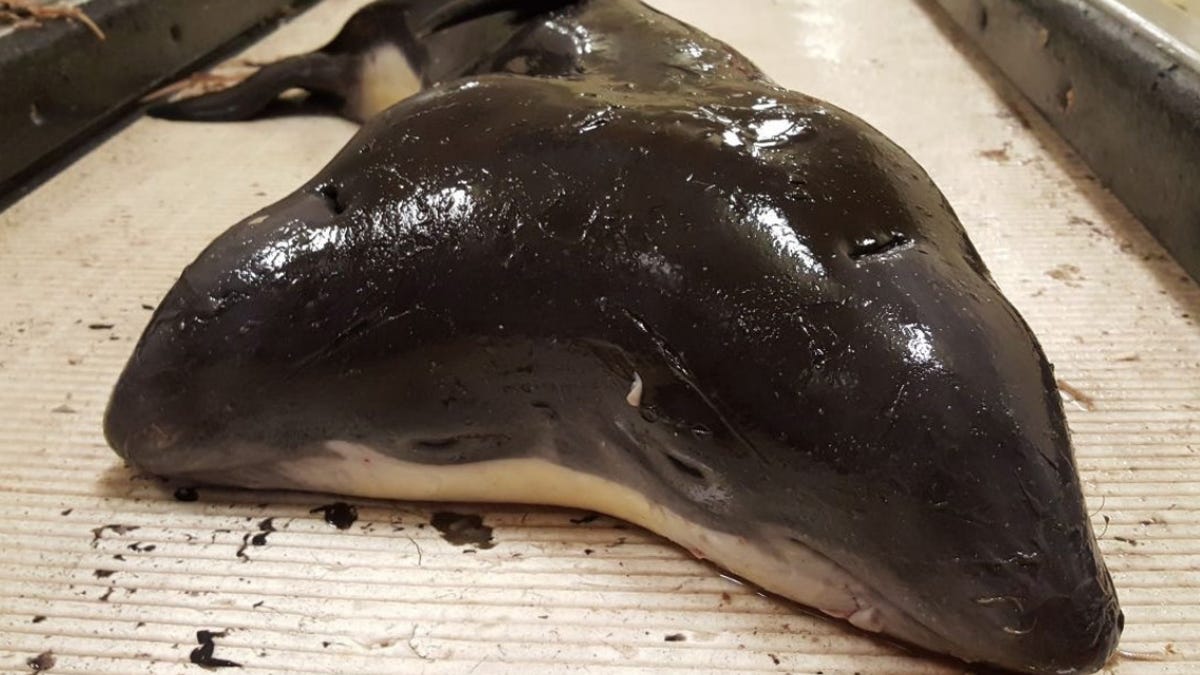First known two-headed porpoise was thrown back into sea
Fishermen in the North Sea did take photos of the dead conjoined porpoise trapped in a net, and now Dutch biologists have reached a few conclusions.
Two-headed animals aren't so unusual to come across, especially in livestock or domesticated animals, but finding them in the ocean is indeed a rarity.
However last month, fisherman working in the North Sea off the coast of the Netherlands came across a two-headed porpoise in their nets and snapped a few photos of the oddity.
The crew then threw it back into the ocean, worried that it might be illegal to keep, even though it was already dead.
The photos show that the conjoined porpoise has one tail, one dorsal fin, two pectoral fins and, most remarkably, two fully grown heads (referred to as parapagus dicephalus) complete with two sets of eyes and two blowholes.
A team of Dutch biologists from the Natural History Museum Rotterdam, Royal Netherlands Institute for Sea Research and Wageningen Marine Research found the photos so fascinating that they published a case study earlier this month about the discovery. "The first case of conjoined twin harbour porpoises Phocoena phocoena (Mammalia, Cetacea)" (PDF) was published in Deinsea, the online journal of the Natural History Museum Rotterdam.
"Reports of conjoined twins in wild mammals are extremely scarce," the study states. "This case concerns the second known case of twinning and the first case of conjoined twins in P. phocoena, the fourth known case of parapagus dicephalus in any cetacean species and the tenth known case of conjoined twinning in a cetacean species."
Their study found that the conjoined porpoise didn't die in the fishermen's nets, but most likely died during birth based on the flaccid dorsal fin, the open umbilicus and hairs visible on both upper lips, spotted from the fishermen's photos.
The study does not offer explanations as to how conjoined sea creatures such as this porpoise came to be. And because the specimen was thrown back into the sea by the fishermen, the scientists only have the snapshots to go by.
Tech Culture: From film and television to social media and games, here's your place for the lighter side of tech.
Solving for XX: The tech industry seeks to overcome outdated ideas about "women in tech."


